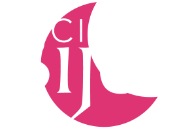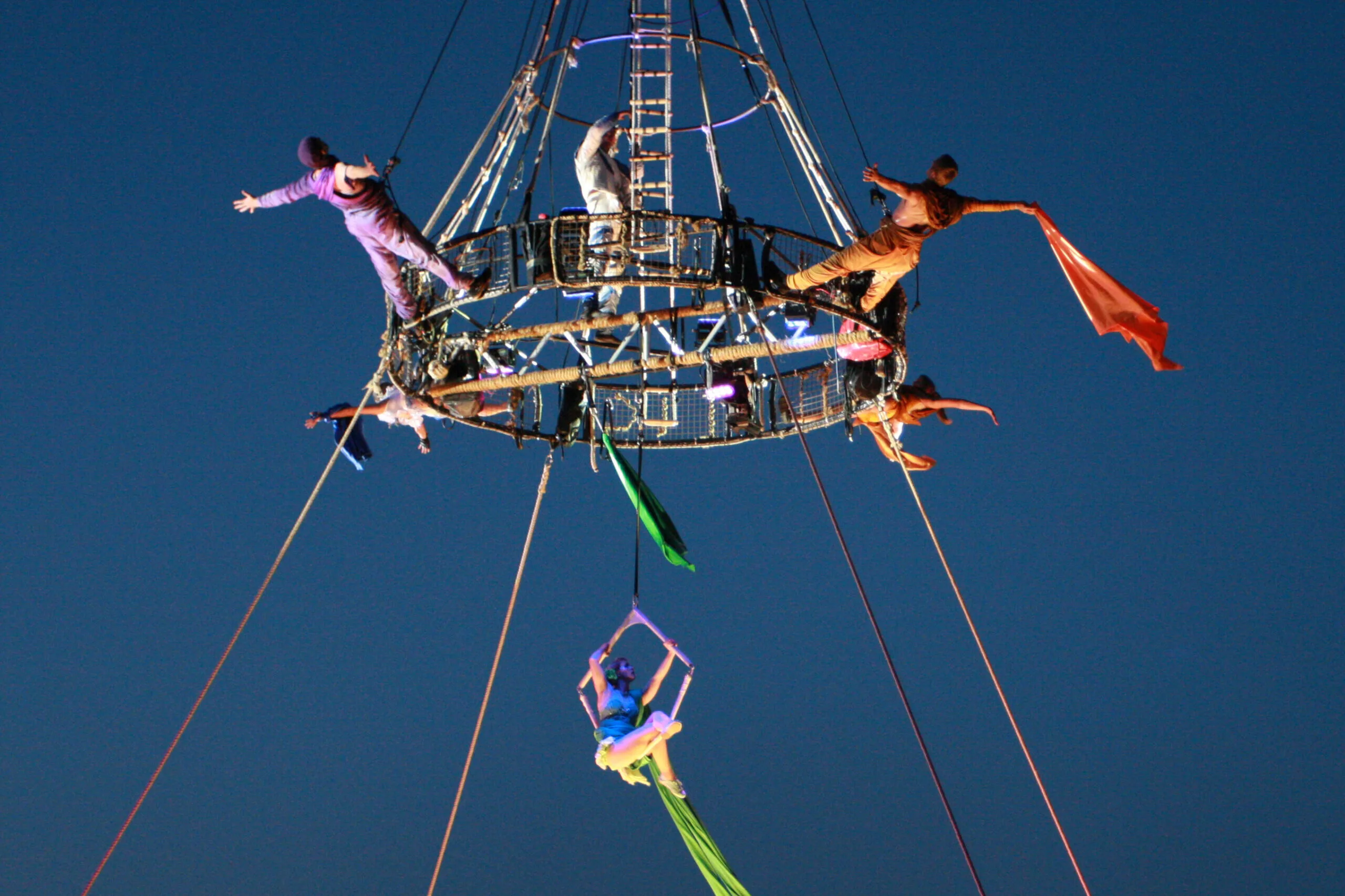by Billy Alwen, Artistic Director
We love collecting, creating and telling stories. Whether our own, or those of our clients.
Often these stories are told on a large scale to diverse audiences – all with differing ages, languages and communication needs. Often they’re told in the middle of a city centre, or in a field, or in any number of unusual outdoor spaces. In these circumstances it can be tricky to convey a clear narrative.
We found a good way to tell stories whilst simultaneously performing on a large scale is to layer our shows. We do this with a mixture of immersive and close up theatre and circus, and large visual imagery. This can include video mapping, costume design, transformative sets and large mobile props. We also regularly use live and filmed interpretation for D/deaf audience members and audio interpretation for the visually impaired.
Props to Tell Stories
Of the techniques outlined above, we have especially come to appreciate and be excited by the use of large props. As a way of telling stories and conveying meaning, spectacle and performance on a large scale, they’re hard to beat.
During our three world tours with Muse we created some simple but really effective performance props. A 6 metre high mechanical robot, a flying lightbulb and flying saucer. Each one was designed to tour and be transported across Europe. The band (and particularly the lead singer Matt Bellamy) became closely involved in the concept of each of the props.
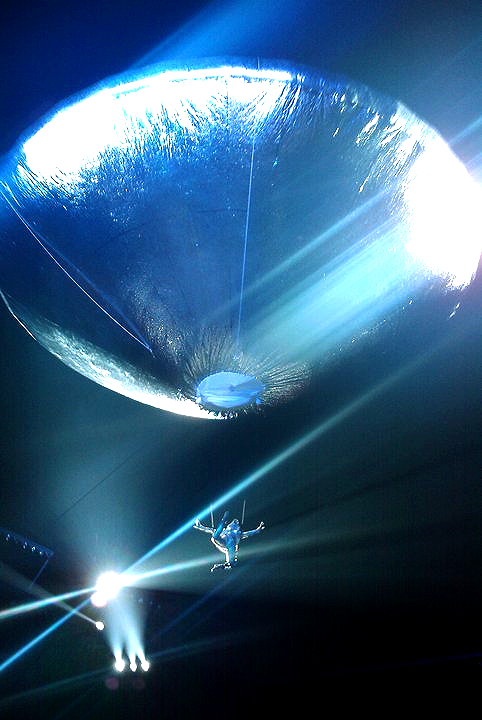
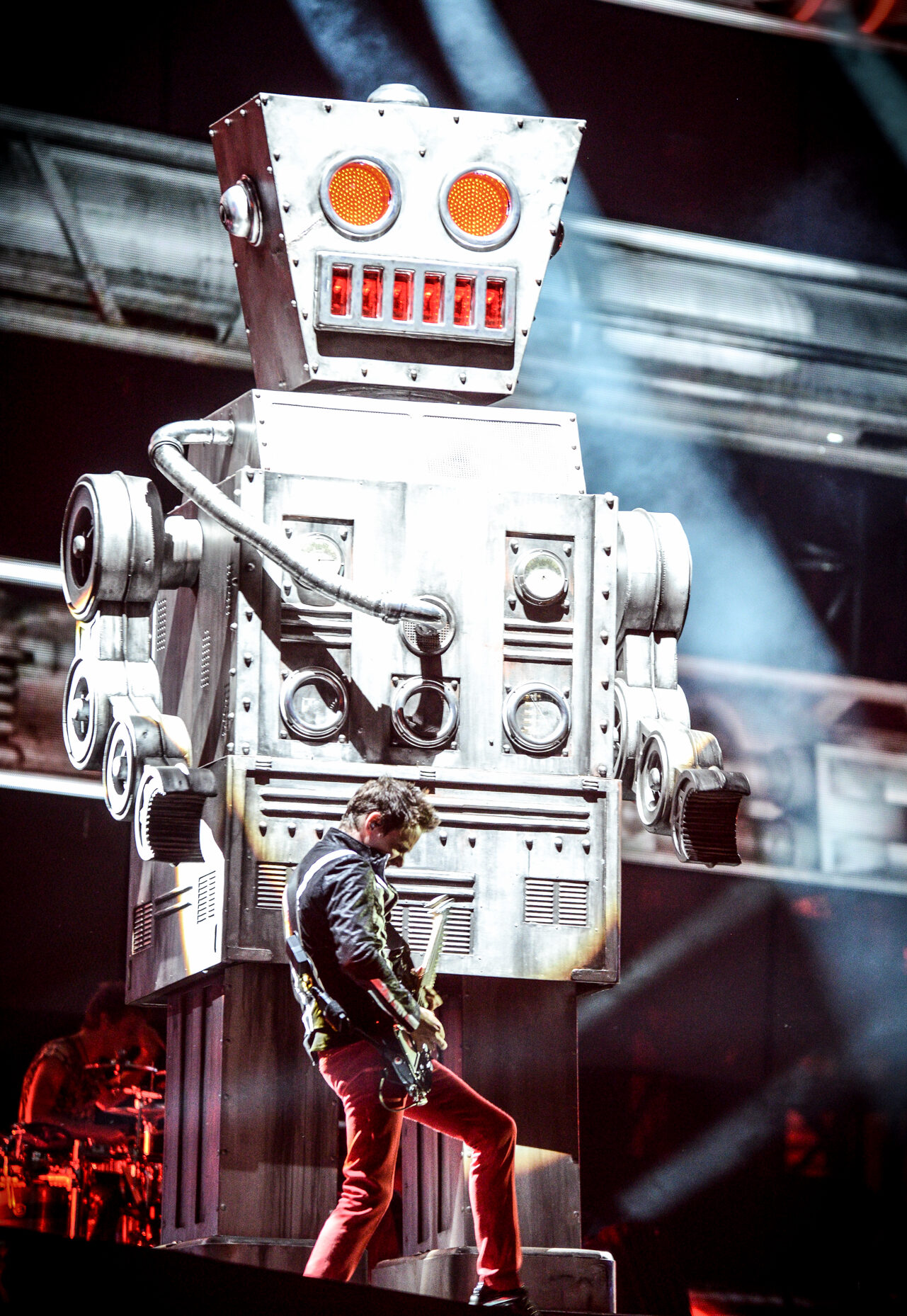
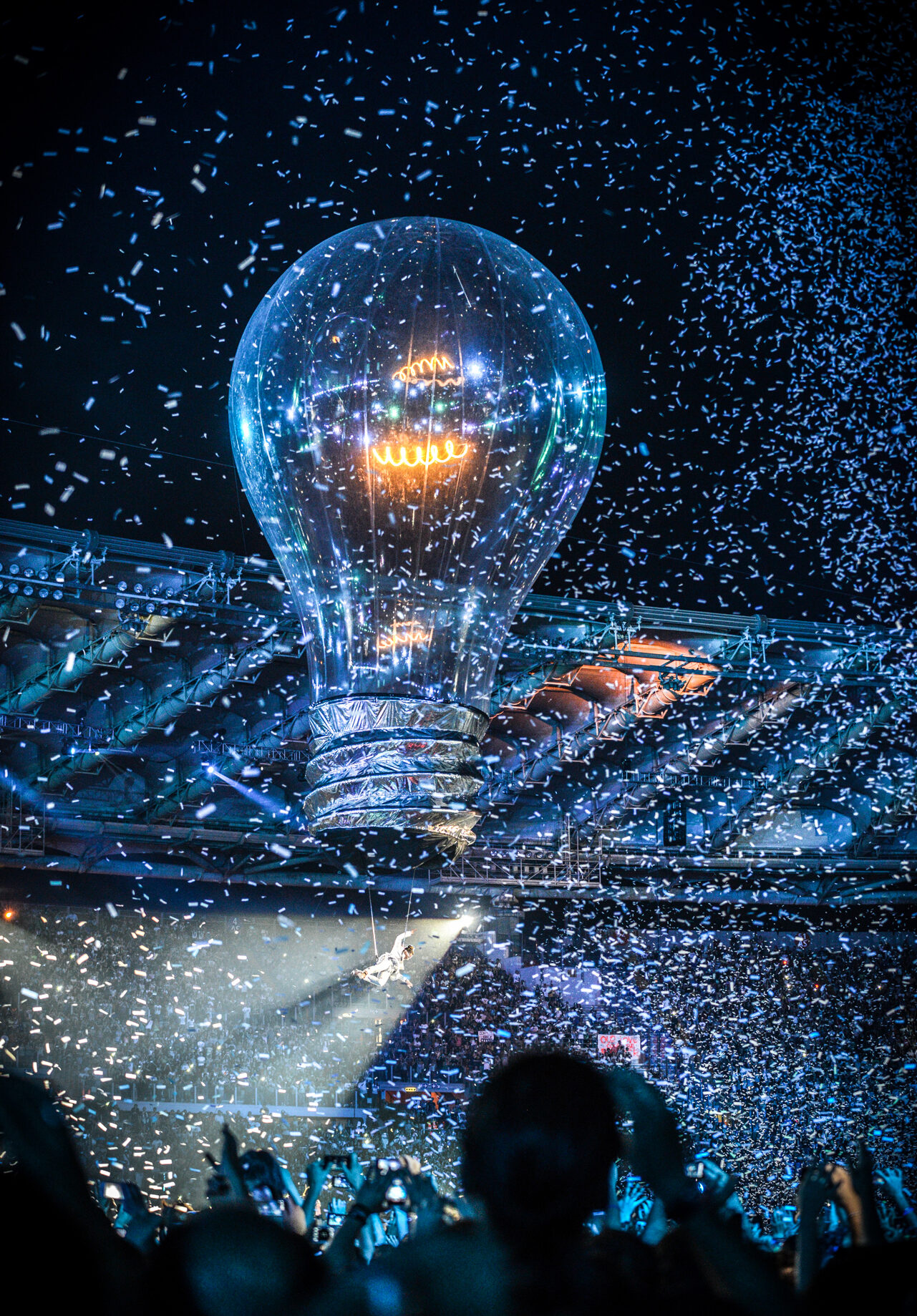
For Extraordinary Bodies, designing universality into our sets and creating a level playing field for artists is part of the company’s philosophy. The sets are designed to push the artists further and help create new movement and circus technique. This in turn helps us, as directors, to tell the stories we want to convey at different scales.
Process
Listening to a recent podcast on the creation of video games in the eighties reminded me of how we often have to work.
Many of the early computer game designers were siblings, often in their teens. Brothers and sisters have a knack of challenging and competing against each other. This environment encouraged ideas and innovation, resulting in the creation of some the UK’s most successful games companies.
A close working relationship between director and designer – and often the client, too – is essential. It needs to start very early in the process. From the off we need to consider the right aesthetic, weight, balance, safety aspects, story and circus possibility.
We recently collaborated with Camp Bestival to design an aerial heart. This became both a flying stage and suspension point for aerialists. The Heart was the focal point for our show ‘All You Need is Love’ and importantly looked great in marketing shots for us and the festival.
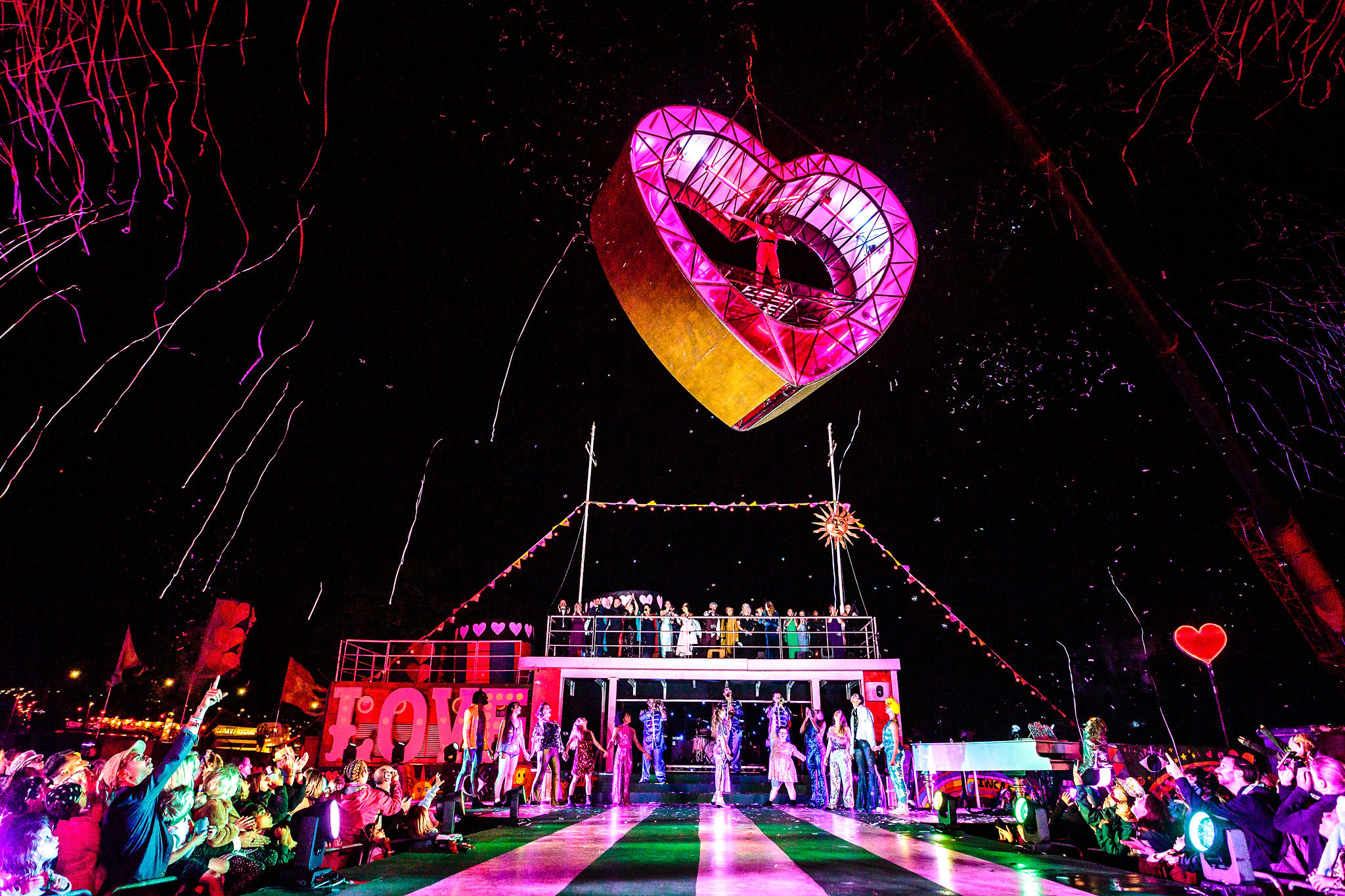
Design and Build
For Cirque Bijou, having a dynamic and collaborative process is essential to pushing the development of equipment.
In most cases the equipment we make has no blueprint or template, only a reference point. We have to bring in as much external and internal expertise as possible. It’s a detailed and complex process of creating, refining and improving involving a range of experts. Fortunately we have some very talented and brilliant friends in the industry who have helped us make some unique props over the years – flaming guitars, pyro wings, LED umbrellas and costumes, and many more.
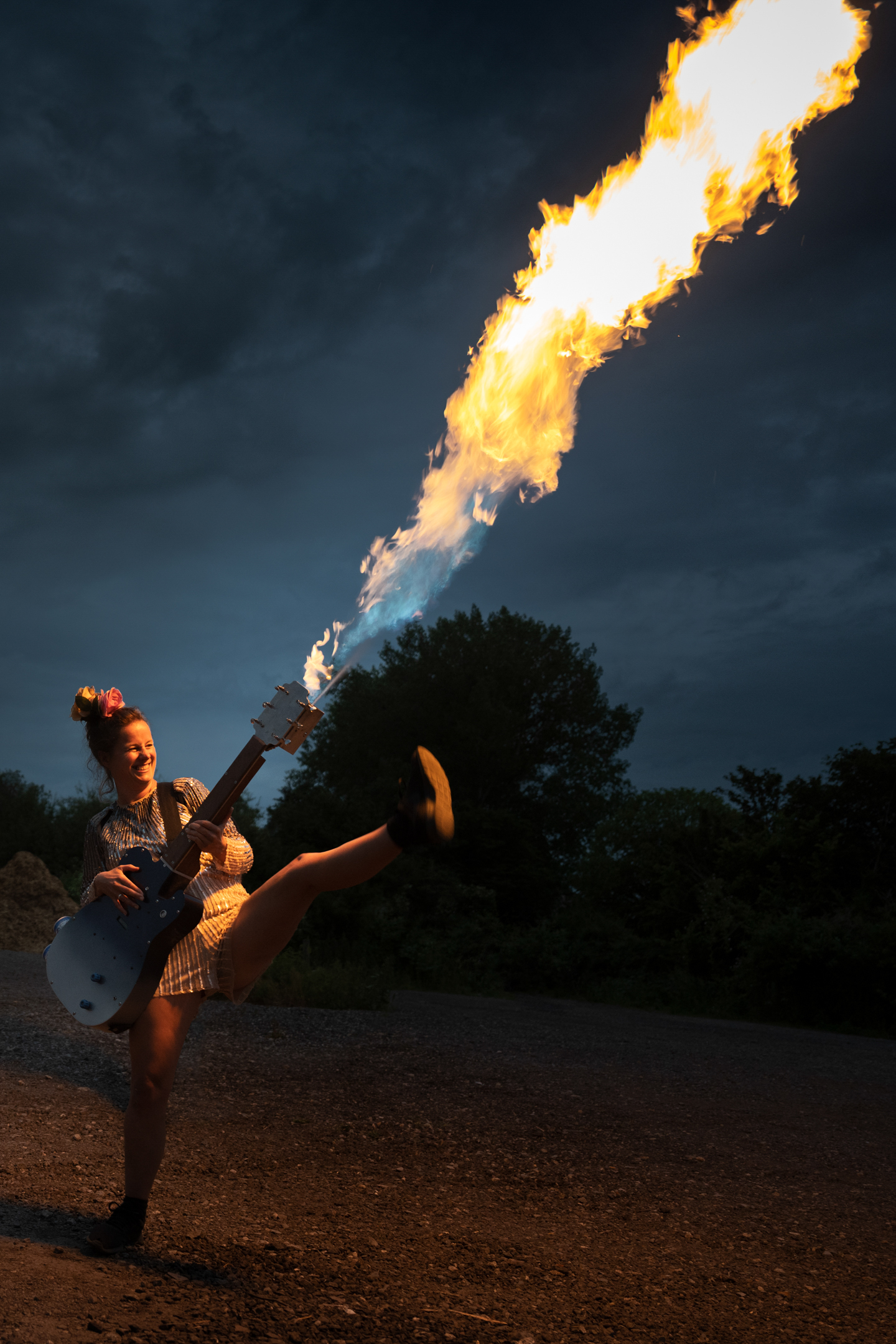

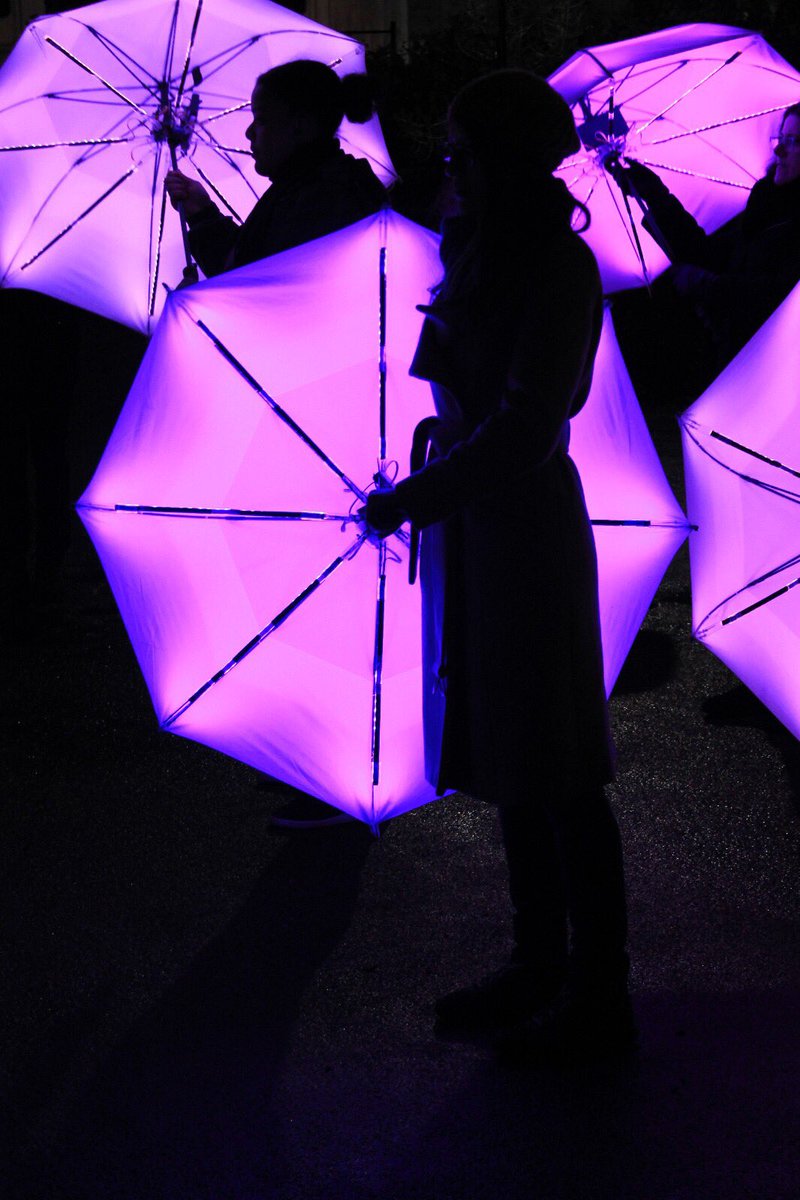
Health and Safety
Because we often end up suspending artists from the props, we need to make sure they are safe and technically sound. Models can help us work out how props might act if different forces are applied to them, but in reality we only know how the equipment might truly work when we are in the rehearsal room and can play with it at full size.
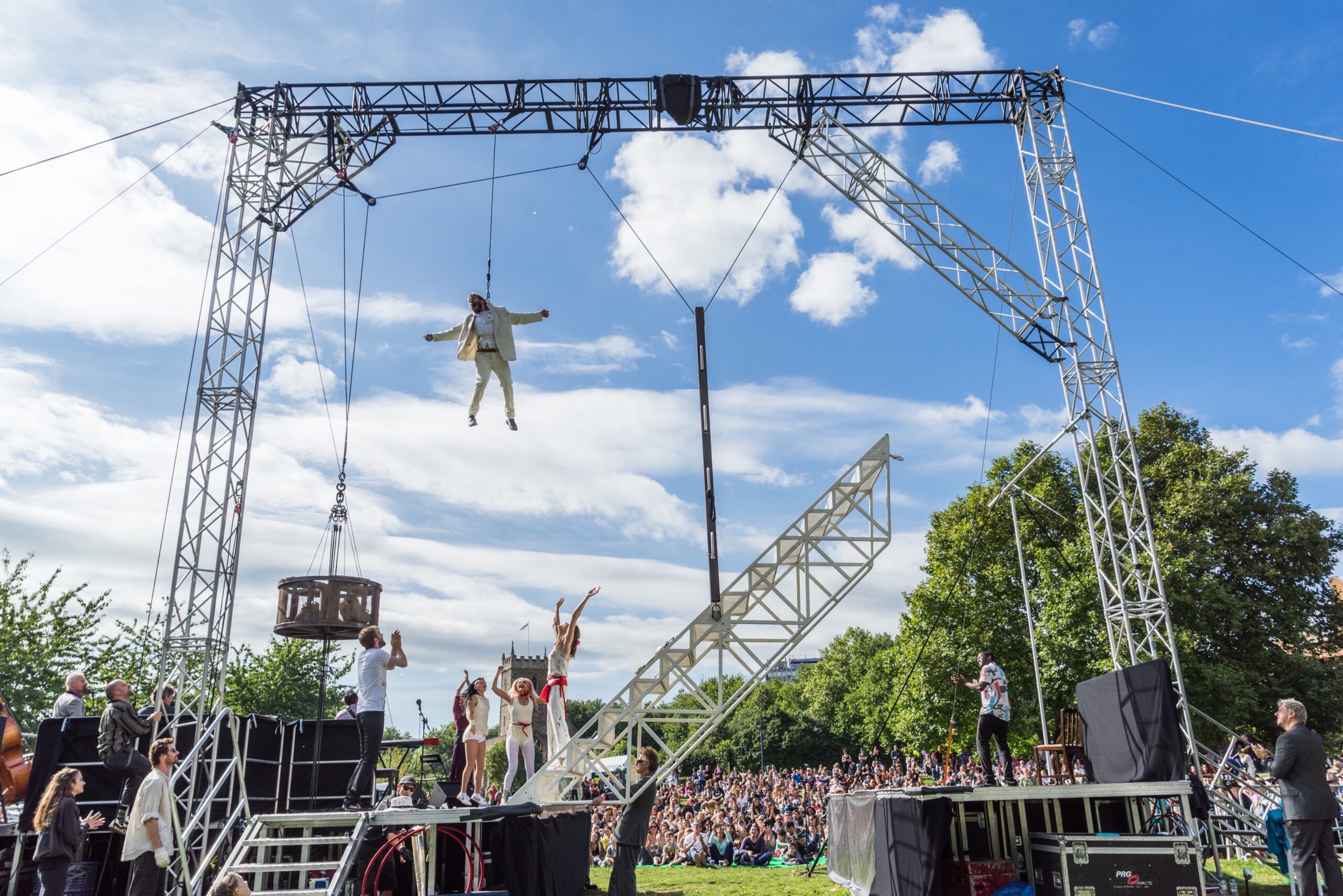
The flying and tipping bridge/staircase that we made for our first Extraordinary Bodies show ‘Weighting’ weighed a quarter of a ton, and didn’t react quite as we imagined when we first tried it out. We had to take a step backwards. We took the artists out of the room and spent a day with our riggers testing the equipment before bringing them back in.
Ultimately it was a fantastic flying set that told our story, became a stage for circus and aerial work and suspended the entire cast on its steps. The fact that it was made of solid steel and was exceptionally heavy gave it stability and grace. Designed by Will Datson, it was the first of many flying props that Will went on to co-design and make for Extraordinary Bodies.
Future Proofing
When designing these props, we try to factor in all possibilities from the beginning. This means including options to use pyro, SFX, and lighting, so that we are future proofing as much as possible. Our head of production, Nic Prior, brought some design and technical knowledge in house, enabling us to realise a long-held dream of making a flying piano. Nic brought together the makers and riggers for this, and project managed the build. This resulted in a beautiful and really flexible piece of equipment.
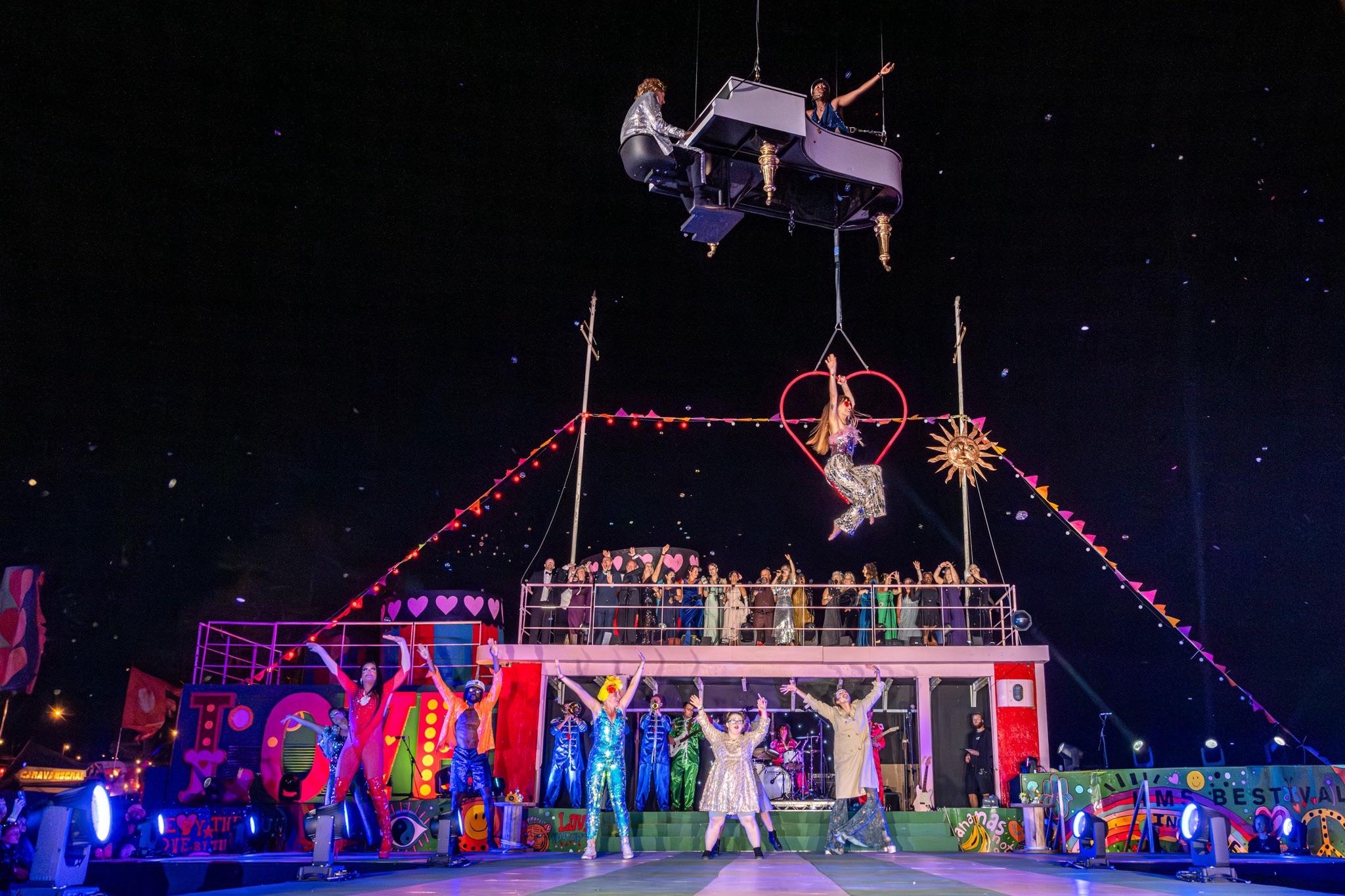
The most important aspect of the design process for me is having regular communication with the client, the artists who will be performing on the equipment, and the tech team who will be operating it. This ensures everyone has the ability to have their own input into the process.
It’s great to have such an impressive catalogue of brilliant builds, and we love seeing them given a new life in different iterations, in different shows.
Get in touch if you’d like to speak to us about creating a new show or prop together.
Photo credits: Joe Clarke, Leora Bermiester, Danilo Giovannangeli, Andre Pattenden, Elmar Rubio
